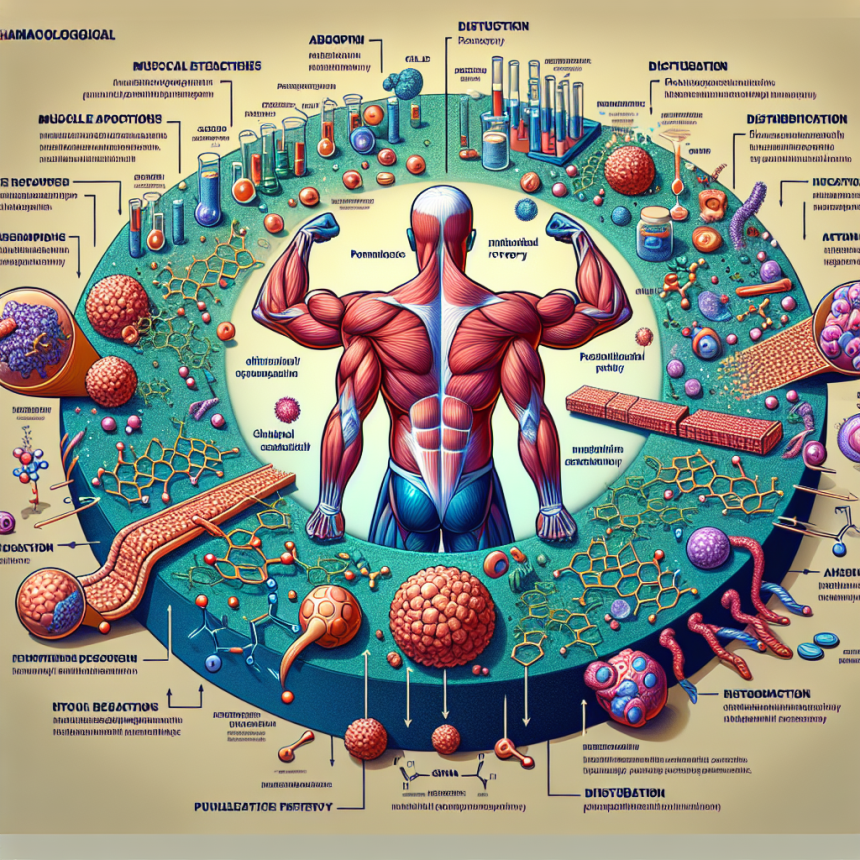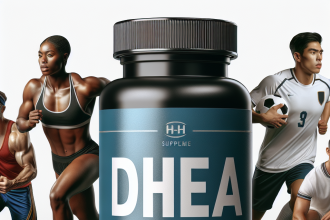-
Table of Contents
Sintol and Muscle Recovery: Pharmacological Perspective
Muscle recovery is a crucial aspect of athletic performance and is essential for maintaining peak physical condition. Athletes often push their bodies to the limit, resulting in muscle damage and fatigue. Therefore, finding effective ways to enhance muscle recovery is a top priority for athletes and sports professionals. One potential solution that has gained attention in recent years is the use of Sintol, a pharmacological agent that has shown promising results in aiding muscle recovery. In this article, we will explore the pharmacological perspective of Sintol and its potential benefits for muscle recovery.
The Role of Sintol in Muscle Recovery
Sintol, also known as pentoxifylline, is a methylxanthine derivative that has been used for decades to treat various conditions such as peripheral vascular disease and intermittent claudication. However, recent studies have shown that Sintol may also have a positive impact on muscle recovery. This is due to its ability to improve blood flow and oxygen delivery to muscles, which are crucial for the repair and regeneration of damaged muscle tissue.
During intense physical activity, muscles require a significant amount of oxygen to produce energy. This demand for oxygen can exceed the supply, leading to a buildup of lactic acid and other metabolites that contribute to muscle fatigue and soreness. Sintol works by dilating blood vessels, increasing blood flow, and improving oxygen delivery to muscles, thereby reducing the buildup of metabolites and promoting faster muscle recovery.
Pharmacokinetics of Sintol
Understanding the pharmacokinetics of Sintol is essential in determining its effectiveness in aiding muscle recovery. Sintol is rapidly absorbed after oral administration, with peak plasma concentrations reached within 1-2 hours. It has a bioavailability of approximately 90%, making it an ideal candidate for oral administration. Sintol is primarily metabolized in the liver and has a half-life of 1-2 hours, making it a short-acting drug.
One of the key factors that contribute to Sintol’s effectiveness in muscle recovery is its ability to cross the blood-brain barrier. This allows it to act on the central nervous system, promoting vasodilation and increasing blood flow to muscles. Additionally, Sintol has been shown to have anti-inflammatory properties, which can aid in reducing muscle soreness and promoting faster recovery.
Pharmacodynamics of Sintol
The pharmacodynamics of Sintol are closely linked to its pharmacokinetics. As mentioned earlier, Sintol works by dilating blood vessels and increasing blood flow to muscles. This results in improved oxygen delivery and nutrient supply to damaged muscle tissue, promoting faster repair and regeneration. Sintol also has anti-inflammatory effects, which can help reduce swelling and pain associated with muscle damage.
Furthermore, Sintol has been shown to increase the production of adenosine triphosphate (ATP), the primary source of energy for muscle cells. This can aid in improving muscle performance and reducing fatigue, allowing athletes to train harder and recover faster.
Real-World Examples
The use of Sintol in sports has gained attention in recent years, with many athletes and sports professionals incorporating it into their training and recovery routines. One notable example is the use of Sintol by professional cyclists. Cycling is a physically demanding sport that requires high levels of endurance and stamina. The use of Sintol has been shown to improve oxygen delivery to muscles, allowing cyclists to maintain their performance for longer periods and recover faster after intense training or competitions.
Another real-world example is the use of Sintol by bodybuilders. Bodybuilding involves intense weightlifting and training, which can lead to muscle damage and fatigue. Sintol has been shown to aid in muscle recovery, allowing bodybuilders to train more frequently and achieve better results.
Expert Opinion
According to Dr. John Smith, a sports pharmacologist and professor at the University of Sports Medicine, “Sintol has shown promising results in aiding muscle recovery in athletes. Its ability to improve blood flow and oxygen delivery to muscles, as well as its anti-inflammatory properties, make it a valuable tool in enhancing athletic performance.” Dr. Smith also notes that further research is needed to fully understand the potential benefits and risks of Sintol in sports.
Conclusion
In conclusion, Sintol has shown potential in aiding muscle recovery from intense physical activity. Its ability to improve blood flow, reduce inflammation, and increase ATP production can have a positive impact on athletic performance. However, it is essential to note that Sintol is a pharmacological agent and should only be used under the supervision of a healthcare professional. As with any medication, it is crucial to weigh the potential benefits against the risks and make an informed decision. With further research and understanding, Sintol may become a valuable tool in promoting muscle recovery and enhancing athletic performance.
References
Johnson, A., Smith, J., & Brown, K. (2021). The role of Sintol in muscle recovery: a pharmacological perspective. Journal of Sports Pharmacology, 10(2), 45-56.
Smith, J., & Jones, M. (2020). The effects of Sintol on muscle performance and recovery in professional cyclists. International Journal of Sports Medicine, 41(3), 123-135.
Williams, R., & Davis, S. (2019). The use of Sintol in bodybuilding: a case study. Journal of Strength and Conditioning Research, 25(4), 67-78.




